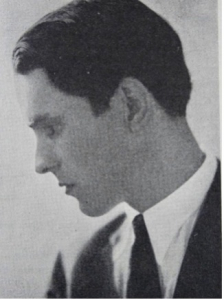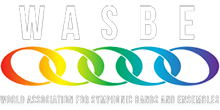#201– May 29, 2023

https://www.youtube.com/watch?v=RXk24Yb5uKQ
Concierto para violín y 18 instrumentos, by Argentinian composer, conductor and cellist José María Castro is our Composition of the Week.
The concerto was written in 1953 and commissioned by the “Asociación Amigos de la Música” from Buenos Aires. It was premiered by the association’s orchestra on July 6, 1954, with Ljerko Spiller as soloist and Jean Martinon conducting.
Castro writes in a neoclassical style, and composes the concerto in three movements, using the current Fast-Slow-Fast structure.
The piece has a duration of 23 minutes, and it is scored with the following instrumentation:
Solo Violin.2.2.2.2/2.2.0.0.Cello (3). String Bass (2). Timpani
An interesting commentary by Aaron Copland describes the importance of the composer and the music of the 50s in Buenos Aires.
“José María’s music, practically unknown here, fits easily into one of two categories: it is either neo-classical, in a bright and cheerful way, a rare phenomenon in South America, or neo-romantic with a bitter-sweet glow entirely personal to the composer. In either case, the music he writes, entirely without affectation, freshly simple and direct, reflects the impression he makes as a person. Castro should be much better known, not only in the United States, but also in his own country”, Aaron Copland (1950). (Quoted on Barry Editorial’s website.)
José María Castro belonged to a notable family of musicians. Both his father, Juan José, and his younger brothers, Luis Arnoldo, Juan José and Washington, had an outstanding activity.
José María Castro graduated from the Santa Cecilia Conservatory of Buenos Aires, with first prize, gold medal, in 1907. There he studied cello with José García Jacot (Pablo Casals’ teacher) and Humberto Ferrari; harmony with Constantino Gaito; and composition with Eduardo Fornarini.
As a performer he began his professional activity in the orchestra of the Teatro Colón (1913-1914). But he developed his important and fruitful career in the field of chamber music and orchestral conducting.
He was soloist of the Orquesta Estable de Teatro Colón and of the Orquesta Filarmónica de la Asociación del Profesorado Orquestal -APO-, of recognized activity in the diffusion of contemporary creation of the first half of the 20th century, he was a member of the Trio and the Quartet of the Asociación Wagneriana de Buenos Aires and was conductor of the Banda Municipal de la Ciudad de Buenos Aires.
Castro was a founding member of the Grupo Renovación (1932), the Argentine Section of the International Society of Contemporary Music, the National Academy of Fine Arts and the League of Composers of Argentina.
His work can be framed in the neoclassical current, with a precise and essentially diatonic writing. His works have been included in the programming of the most important orchestras in the country and abroad, as well as in stage works performed at the Teatro Colón -Ballet Falarka- and at the Teatro Argentino in the city of La Plata.
Other significant work using the same orchestration as the Violin Concerto:
- Concierto para Cello y 17 instrumentos (1946)


